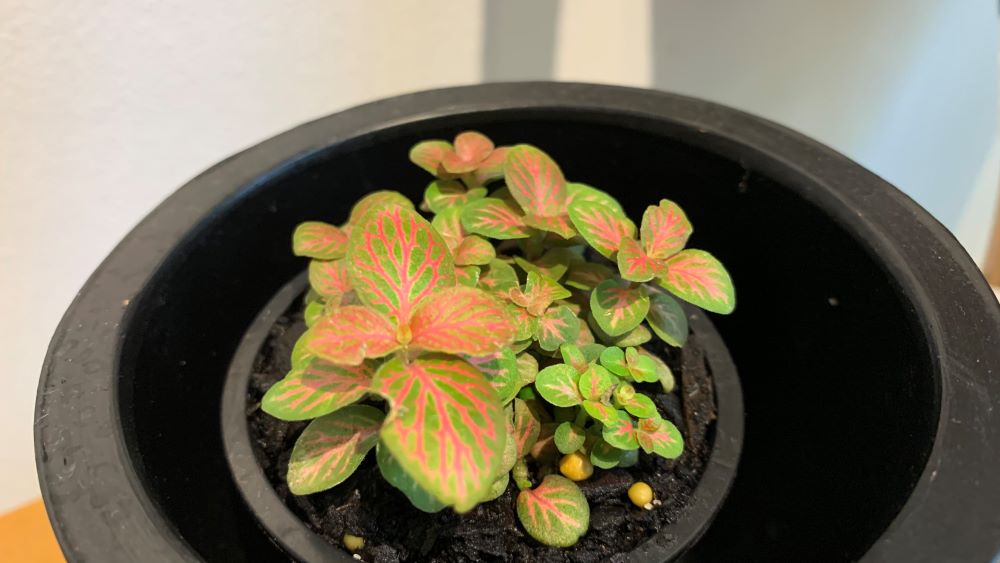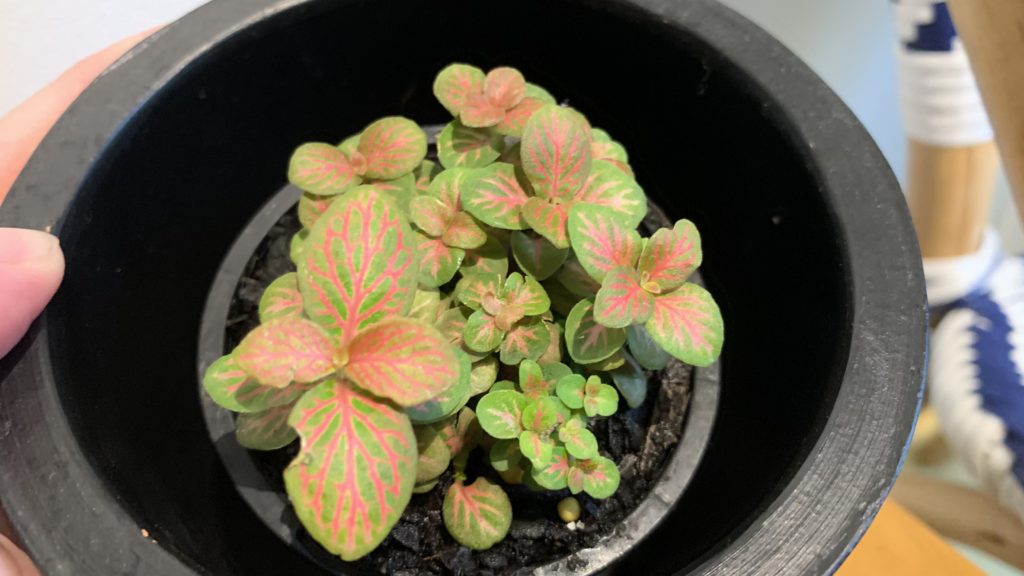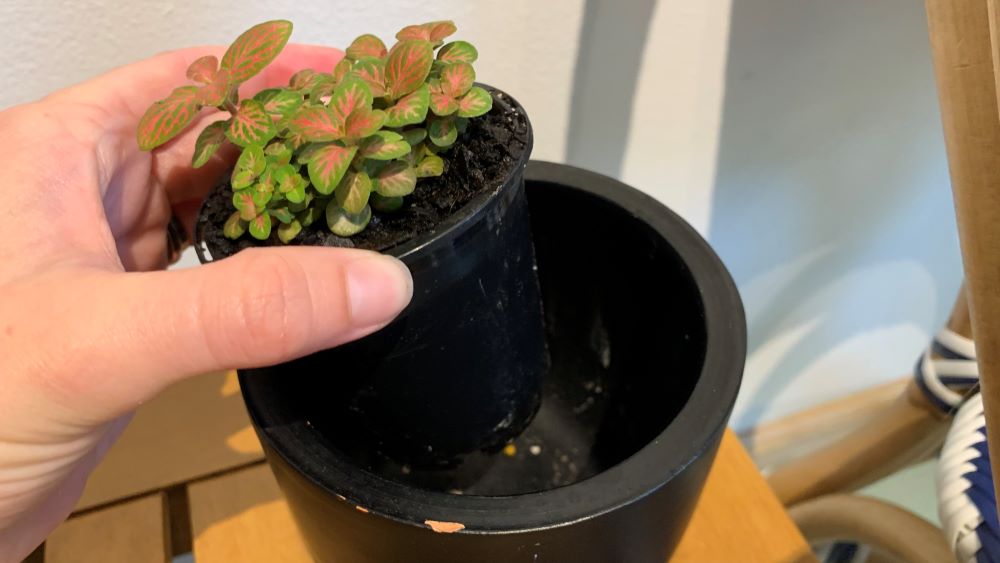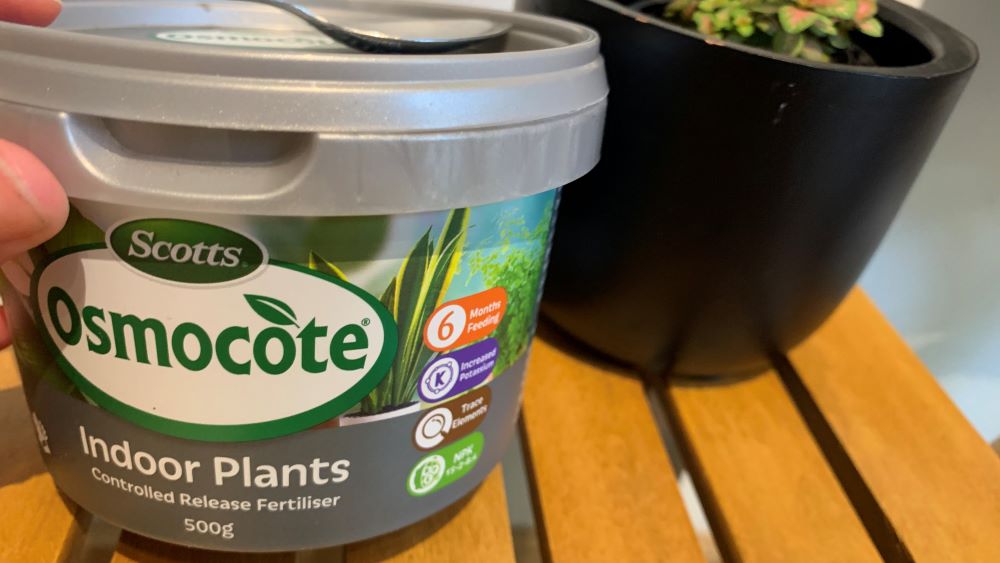Fittonia plants will droop because they are overwatered, underwatered, are getting too much sun or of the soil does not contain enough nutrients. To save your drooping fittonia, work out if the soil is too dry or too wet. Deep water dry fittonia to revive them.
Overwatered fittonia will often develop black spots on its leaves as the problem gets worse. Allow the soil to dry out for longer between watering to avoid root rot.

This article will explore the top reasons why fittonia (nerve plants) droop and how you can save it.
Why fittonia plants droop
The top 4 reasons why fittonias droop are overwatering, underwatering, incorrect light conditions and a lack of nutrients. Explore each one to see what might be causing drooping leaves on your fittonia.
1. Overwatering
Fittonia plants love moist soil but too much water can cause their leaves to droop. Lots of water can damage the root tips, causing rots and stopping them from absorbing the water and nutrients they need. The leaves will droop and you may also notice black or brown spots on the leaves.

2. Underwatering
Underwatering is another common cause of drooping leaves on fittonia. These plants like moist soil particularly when they are small. If the plant is left to dry out too much the leaves will suffer, droop and eventually dry off.
3. Light conditions
Not enough or too much light can cause fittonia leaves to droop. If they are placed near a bright window that gets direct sun or are placed too close to the glass the leaves can burn. You will usually see brown marks on the edges of the leaves.
Fittonia plants that are not getting enough light can also develop drooping leaves. They will need filtered light for at least 3-4 hours in the day. If your plant is getting less than this amount of light, is likely to be the cause of the drooping leaves.
4. Lack of nutrients and poor soil
Another cause of drooping leaves on fittonia plants is a lack of nutrients. These plants grow rapidly during the warmer months of spring and summer and will need extra nutrients to support this growth. Anything that is lacking can cause the leaves to suffer.
A lack of nitrogen will also lead to discoloration of the leaves. Poor quality or old potting soil can often lack the nutrients the plant needs. They often will not contain slow release fertilizer which means that the plant will start to suffer after 2-3 months.
How to revive a drooping plant fittonia
Here are my top tips to revive a drooping fittonia plant at home.
1. Balance the water
The first step is to work out if your fittonia plant is getting too much or not enough water. Test the soil with your finger and if it feels dry 1 inch down it is time to thoroughly water your plant.
To keep your small fittonia happy, spray it with a spray bottle every 3 days in spring and summer. You can reduce this down to once per week in the cooler months of fall and winter.

For larger more established fittonia, you could water it every 4-5 days in summer. A larger pot with more soil will hold water for longer.
If the soil is too wet, then you will need to reduce your watering schedule and make sure that there is no water sitting at the bottom of the indoor pot or in the pot tray.
2. Add some liquid fertilizer
To help your plant to recover from drooping leaves, add a dilute dose of liquid fertilizer. After the soil has been thoroughly wet, add a small amount of liquid indoor plant food mixed through your watering can. This will give the plant a quick dose of nutrients to help it to recover and grow new leaves.
I like to choose an indoor liquid plant fertilizer as they are low odor and will not make your house smell.
3. Add some slow release indoor plant food
After fixing the water levels and giving your plant a dose of liquid fertilizer, follow up after 2 weeks with some indoor plant food. I like to use an all-purpose indoor plant food so I can use it on all of my indoor plants rather than one designed for a specific plant species.
This will feed your plant for up to 6 months. Do this twice per year, once in spring and again in fall to keep your plant growing well.

4. Move the plant to a bright position
The final step to keep your fittonia happy and to prevent its leaves from drooping is to move it to a position that gets bright, filtered light. Avoid any spots that get direct sunlight through a window and make sure it is at least 2 feet away from the glass.
Aim for at least 4 hours of bright, filtered light but more is better. Fittonia will grow faster in the spring and summer and will naturally slow its growth and go dormant over the winter.
Will droopy leaves on fittonia recover?
Drooping leaves on fittonia will recover is the problem is fixed. Giving it more water if it is dry, allowing it time to dry if it is wet and moving it to a bright position will help it to recover. Give it some liquid fertilizer and then 2 weeks later some slow release fertilizer. This will give it a burst of nutrients to help the leaves to strengthen and grow.
How to save a drooping fittonia (Nerve plant) | Summary
Save your drooping fittonia by watering it deeply and adding some liquid fertilizer if it is dry. If you find that the soil is already wet and maybe even growing mold on the surface, slow down your watering. Fittonia that have outgrown their pot will bounce back to life if they are repotted with fresh potting soil.
Give fittonia some slow release fertilizer in spring and fall and place it in a bright position out of direct sunlight.
Happy growing.
I am an accredited practicing dietitian, experienced gardener and a dedicated cook. I love writing and sharing my experience so you can learn from my successes and mistakes.
